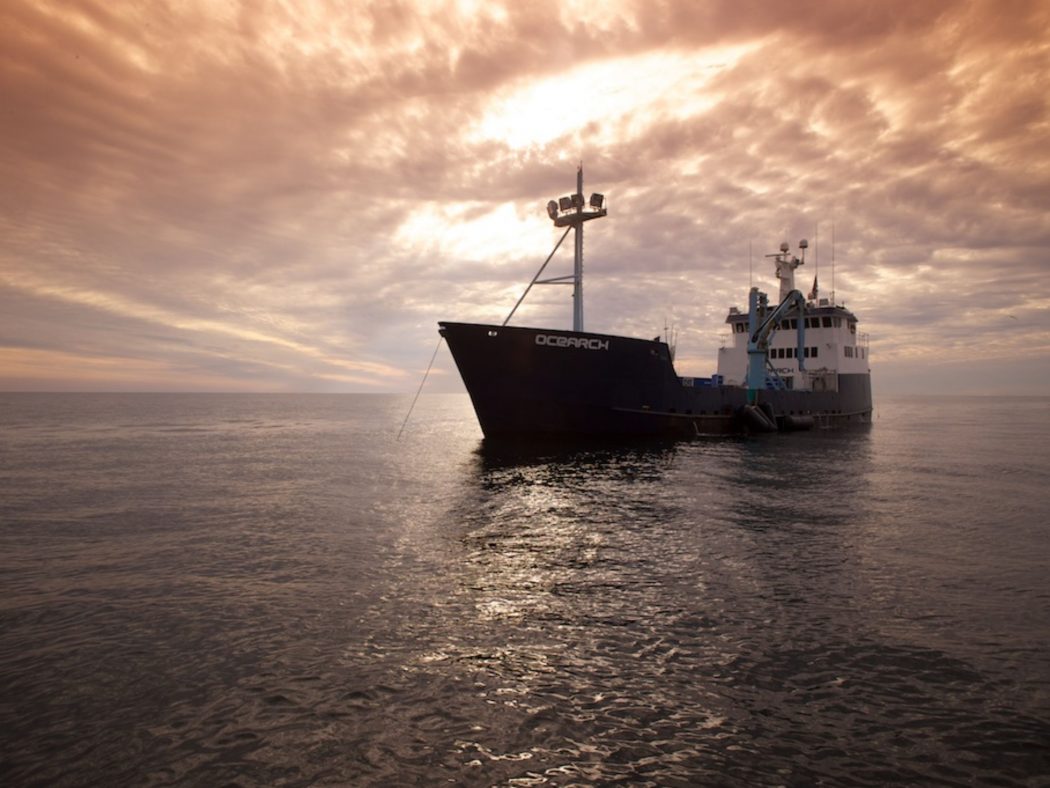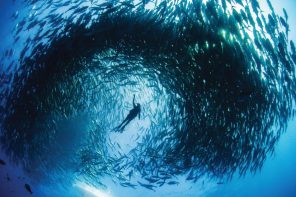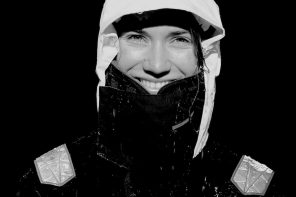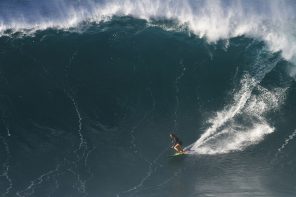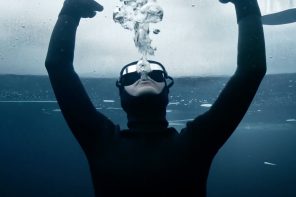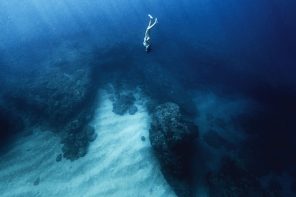The story you are about to read embodies a very common theme found in many significantly great love stories throughout history. It is a story about being in love and chasing a person that seems ultimately elusive. In this specific story, the lovely lady goes by the name of Mary Lee.
Mary is a special kind of girl, the kind that evokes excitement and delivers a deep burn into the memory even after a small, first encounter. The kind of woman that men would follow thousands of miles through oceans of rough water just to understand a little more about her mystique and what makes her tick.
The man chasing Mary in this tale is Chris Fischer, Founding Chairman and Expedition Leader of OCEARCH. For those not yet privy, OCEARCH is a non-profit shark conservation and research group that collects and provides critical and open-source shark data along with educational components to students. Which would make sense, because Mary Lee is, in fact, a 16-foot, 3,500-pound great white shark.
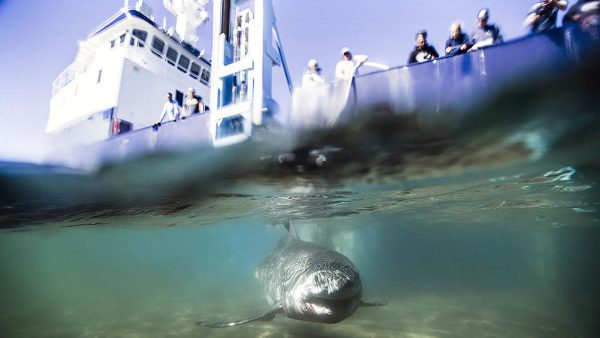
Photo: OCEARCH
The tale of Chris and Mary Lee starts aboard a 118-foot research ship on September 12, 2012, off the coast of Cape Cod, Massachusetts. The name of the ship is the M/V OCEARCH, which serves as an at-sea laboratory for Chris and his team of leading experts. The M/V OCEARCH is equipped with a 75,000-lb. capacity hydraulic platform designed to safely lift sharks of all sizes out of the ocean for access by a multi-disciplined research team to conduct 12 studies in 15 minutes.
On this September day, Chris would meet Mary Lee for the first time on the submerged research deck of this ship. The OCEARCH teams name each great white shark they bring onboard and electronically tag them. Their free online global shark tracker and app allows anyone to then follow and track their favorite shark in near real-time.
Chris was in love.
What you might enjoy knowing is that Mary Lee was named that day after Chris Fischer’s mother. “My parents have done so much. I was waiting and waiting for a special shark to name after her and this is truly the most historic and legendary fish I have ever been a part of.” Chris was in love.
Since that first encounter, OCEARCH has actively tracked/pursued Mary Lee. Traveling over 40,000 miles, she has combed the waters up and down the Atlantic Coastline of the United States, from Florida to Massachusetts. Chris, a man about his lady, always kept a watchful eye on Mary Lee’s pings and location—hoping to be able to meet her again one day and learn more about her ways. They went their separate ways with OCEARCH, conducting over 25 additional research expeditions.
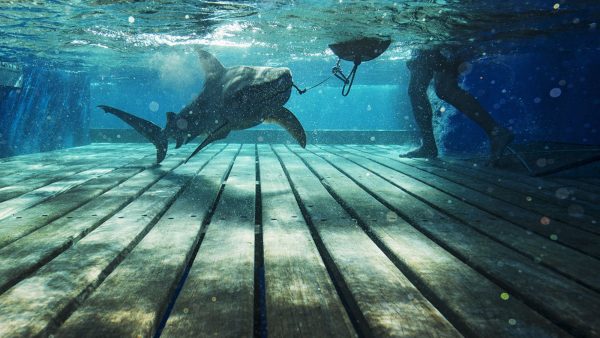
Photo: OCEARCH
Then, in late August of 2016, the OCEARCH team suspected that based on Mary Lee’s patterns and behavior, she was headed to a certain area to give birth. It is widely believed that female great whites give birth every other year due to the long gestation period, however, there is no known documentation of a great white actually giving birth in the wild.
So Chris and the OCEARCH team set their sights on Montauk, NY, looking to rendezvous with the 16-foot girl. On arrival, they’d found that they’d missed another chance encounter with Chris’s love. But not all was lost.
Mary Lee had directed him and the team to a new discovery—one that OCEARCH and Chris had thought about since they started. The OCEARCH team found, what they claim, was the first known birth site for great white sharks on the North Atlantic Coast.
The OCEARCH team found, what they claim, was the first known birth site for great white sharks on the North Atlantic Coast.
This discovery was off the coast of Montauk, NY. The OCEARCH team was able to catch and release nine pups, lift them up onto the ship and perform research projects including taking gas, blood and tissue samples. New umbilical scars on the pups indicated that it was likely a birthing site, with the pups being just one to three months old.
“It’s probably the most significant discovery we’ve ever made on the ocean. The strategy was: get a tag out on big mature animals, and when you get one on a big female, 18 months later, she should lead you to the holy grail of the research, the birthing site,” Fischer explained. “We lose 200,000 sharks a day, about 100 million a year. Sharks are the balance keepers of our oceans.”
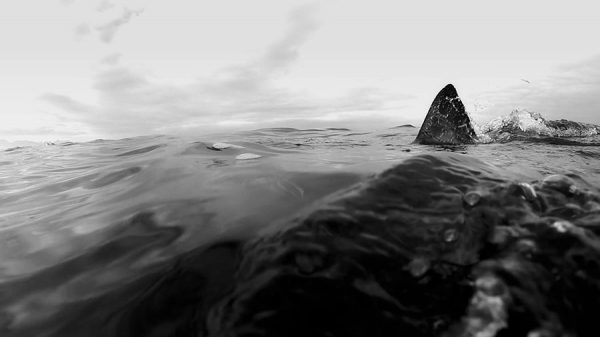
Photo: OCEARCH
“The great white shark problem has nothing to do with shark attacks but everything to do with the protection and research of these keepers of the balance. The fundamental data needed to understand their migratory patterns is just now being collected consistently. We don’t know enough about where and when they travel or where they mate and give birth. Those are the areas we need to protect so the ocean is in balance and fish thrive,” he said.
Chris has not had a chance to see Mary Lee in almost five years since their first date, but he’s keeping up with her on social media these days and following her movements through the OCEARCH shark tracking app. Love is a crazy thing. And so it goes, “You can’t always get what you want, but if you try sometimes, well you might find, you get what you need.”
Follow Mary Lee and Chris’ adventure with OCEARCH on Instagram (@ocearch) and via their website, www.ocearch.org.

